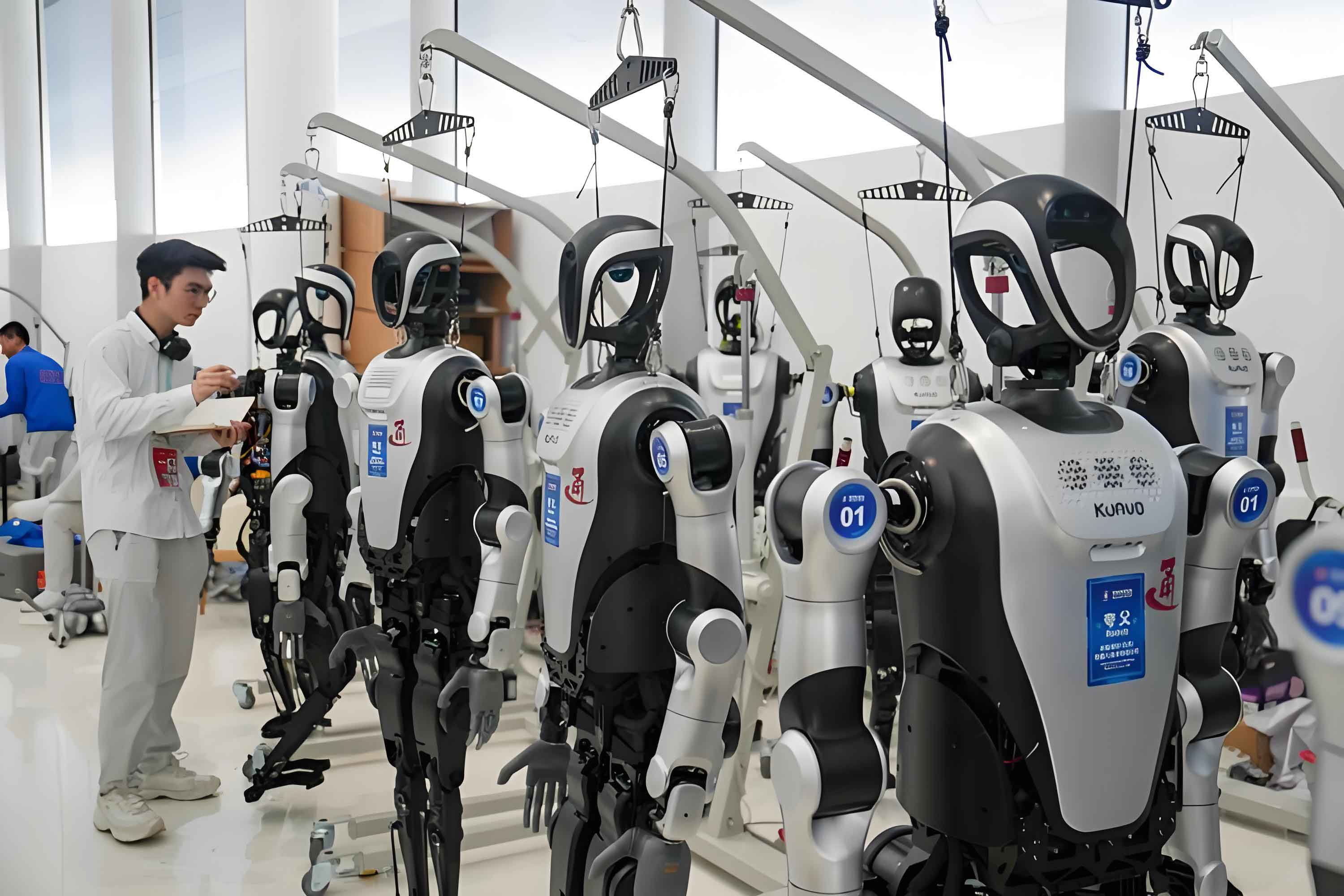In a significant advancement for the field of artificial intelligence and robotics, the Beijing Humanoid Robot Innovation Center has publicly released its cutting-edge WoW (World-Omniscient World Model), an embodied world model designed to enhance the capabilities of humanoid robots. This open-source initiative, announced recently, addresses core challenges in enabling robots to comprehend and interact with the physical world, positioning China at the forefront of global research in humanoid robots. The model’s technical documentation has garnered recognition from the machine learning community Hugging Face and citations from scholars at institutions like Stanford University, underscoring its impact on the evolution of humanoid robots.

The WoW model represents a paradigm shift from mere observation to deep understanding, moving beyond the capabilities of AI video generation models such as the Sora series. By integrating visual, action, physical perception, and reasoning elements into a unified framework, WoW equips humanoid robots with the ability to interpret and navigate complex environments. This breakthrough is particularly crucial for the development of humanoid robots, as it enables them to perform tasks with greater autonomy and precision, bridging the gap between simulated intelligence and real-world applications. The open-source release includes pre-trained models ranging from 1.3 billion to 14 billion parameters, along with inference code, significantly lowering barriers for researchers and developers working on humanoid robots worldwide.
The core innovations of the WoW model are built around four key technical components, each contributing to its superior performance in embodied intelligence for humanoid robots. These components have been meticulously designed to simulate human-like cognitive processes, enhancing the adaptability and efficiency of humanoid robots in dynamic settings. Below is an unordered list summarizing these groundbreaking elements:
- DiT World Generation Base Model: Serving as a “physics engine and imagination system,” this component learns physical laws from 2 million high-quality interaction trajectories. It allows humanoid robots to predict and simulate environmental changes, facilitating better decision-making in unstructured scenarios commonly encountered by humanoid robots.
- FM-IDM Inverse Dynamics Model: This model achieves a closed-loop from “video to action,” enabling humanoid robots to derive executable motion commands directly from visual predictions. It enhances the operational accuracy of humanoid robots, making them more responsive to real-time stimuli.
- SOPHIA Paradigm: Through a iterative cycle of “generate-criticize-correct,” this component mimics human reflective intelligence, allowing humanoid robots to learn from errors and optimize performance over time. This self-improvement mechanism is vital for the long-term deployment of humanoid robots in complex tasks.
- WoWBench Benchmark: As the first global benchmark for embodied world models, WoWBench establishes quantitative evaluation standards across four dimensions: perceptual understanding, predictive reasoning, and others. It provides a reliable metric for assessing the progress of humanoid robots in embodied intelligence.
Empirical tests have demonstrated the WoW model’s exceptional performance, particularly in maintaining physical consistency and handling complex dynamic scenes. For instance, in driving humanoid robots to complete tasks, the model achieved a success rate of 94.5% for simple assignments and 75.2% for moderately difficult ones. Moreover, the generated actions can be directly deployed on real robotic arms, highlighting the practical utility for humanoid robots in industrial and domestic environments. The following table summarizes key performance metrics observed during evaluations, emphasizing the role of humanoid robots in these scenarios:
| Task Difficulty | Success Rate (%) | Application in Humanoid Robots |
|---|---|---|
| Simple Tasks | 94.5 | Basic grasping and object manipulation by humanoid robots |
| Moderate Tasks | 75.2 | Assembly and coordination activities involving humanoid robots |
The open-source release of the WoW model is expected to accelerate the adoption of humanoid robots across various sectors, including manufacturing, healthcare, and logistics. By enabling humanoid robots to autonomously perform functions such as grasping, assembling, and data self-generation, the model reduces reliance on extensive manual programming. This not only enhances the scalability of humanoid robots but also fosters innovation in developing more intelligent and responsive systems. The integration of WoW into humanoid robots could lead to significant cost savings and efficiency improvements, as these machines become capable of learning and adapting in real-time.
Furthermore, the WoW model’s ability to facilitate data self-generation and optimization means that humanoid robots can continuously refine their skills without constant human intervention. This self-evolving capability is a cornerstone for the future of humanoid robots, as it allows them to tackle unforeseen challenges in dynamic environments. For example, in quality inspection processes, humanoid robots equipped with WoW can identify defects and adjust actions accordingly, ensuring higher precision and reliability. The model’s emphasis on physical consistency ensures that humanoid robots operate safely and effectively, minimizing errors in critical applications.
The recognition from international academic and industry circles, such as Hugging Face and Stanford University, validates the WoW model’s potential to set new standards in embodied intelligence for humanoid robots. As research communities worldwide explore this open-source resource, collaborations and advancements in humanoid robots are likely to flourish, driving the technology toward broader commercialization. The Beijing Humanoid Robot Innovation Center’s initiative not only showcases China’s growing expertise in humanoid robots but also promotes global knowledge sharing, which is essential for addressing universal challenges in robotics and AI.
In conclusion, the open-sourcing of the WoW embodied world model marks a pivotal moment in the evolution of humanoid robots, offering a robust framework for enhancing their cognitive and physical capabilities. With its comprehensive technical components and proven performance, WoW paves the way for humanoid robots to become more autonomous, efficient, and integral to various industries. As the field progresses, the continued emphasis on open innovation and collaboration will be key to unlocking the full potential of humanoid robots, ultimately transforming how they interact with and benefit human society.
